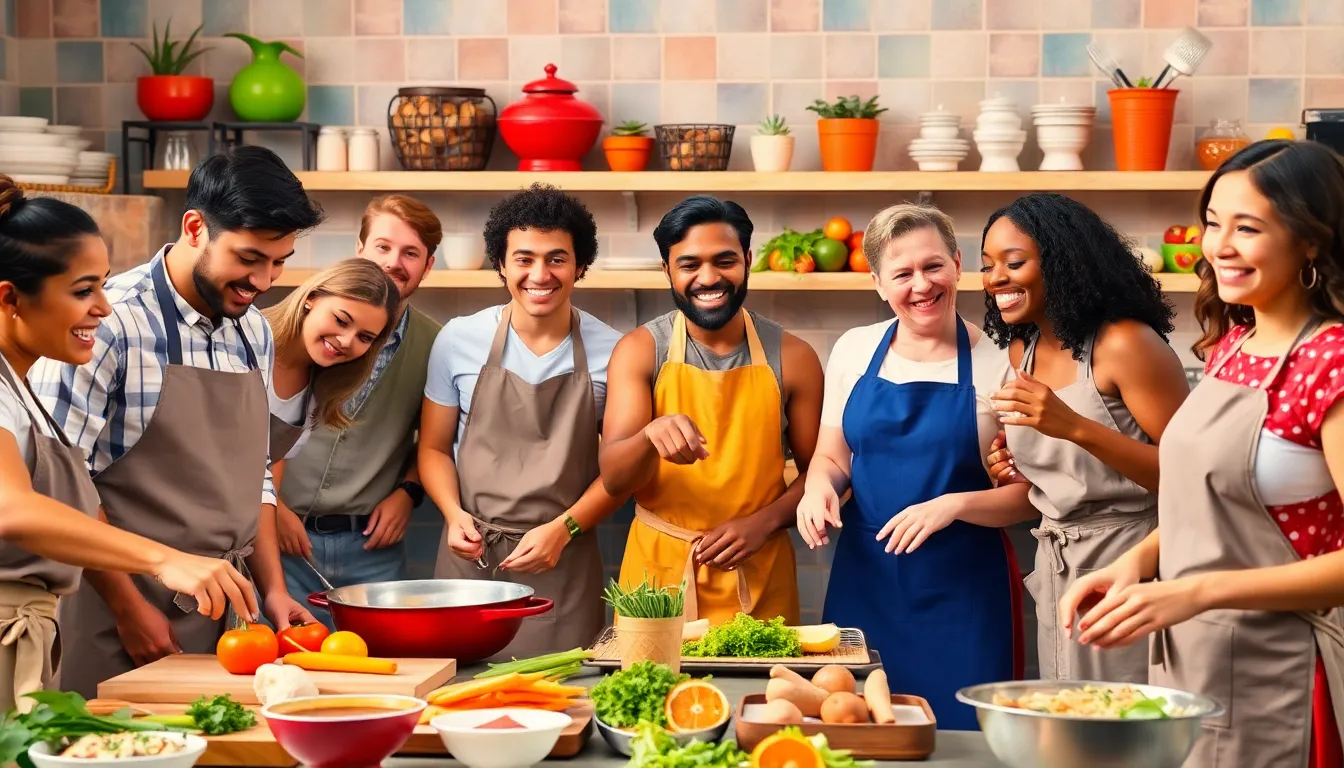
Cooking shows have taken the world by storm, captivating audiences with their blend of entertainment and culinary education. From competitive cooking battles to heartwarming family recipes, these programs offer a delightful escape into the kitchen, showcasing the art of food preparation in all its glory. Viewers are not just passive observers; they’re inspired to don their aprons and try their hand at new dishes. With a variety of formats and themes, cooking shows cater to every taste and skill level, making cooking more accessible than ever. As they explore diverse cuisines and innovative techniques, audiences discover that the joy of cooking goes far beyond the plate.
Cooking Shows
Cooking shows have surged in popularity, captivating audiences across various demographics. These programs blend entertainment with education, making culinary arts accessible to all. Popular formats include competitive cooking, instructional demonstrations, and reality-based series, allowing them to cater to different tastes and skill levels. Viewers encounter diverse cuisines from around the world, enhancing their understanding of global flavors and techniques. Cooking shows showcase both traditional recipes and modern innovations, revealing the artistry involved in food preparation. By featuring well-known chefs and home cooks alike, these programs inspire audiences to explore their culinary capabilities. The influence of social media amplifies the reach of cooking shows, enabling viewers to engage with content in real time. Platforms like Instagram and YouTube provide additional channels for discovering recipes and cooking tips from show participants. Viewers share their culinary creations, fostering a community around cooking and encouraging more people to join the movement. Furthermore, cooking shows often emphasize sustainability and healthy eating, addressing current food trends. Programs highlight local ingredients and eco-friendly practices, promoting awareness of the impact of food choices on health and the environment. This educational aspect drives viewers to make informed decisions about their cooking habits. Overall, cooking shows continue to thrive, reshaping how audiences approach cooking and inspiring a new generation of food enthusiasts.Types of Cooking Shows

Competitive Cooking Shows
Competitive cooking shows focus on contestants striving to complete culinary challenges under time constraints. Participants often showcase creativity, technical skills, and adaptability. Examples include “Top Chef,” where chefs engage in intense cook-offs, and “Chopped,” which involves mystery basket ingredients. These shows promote an exciting atmosphere, emphasizing both gastronomic excellence and dramatic storytelling.Reality-Based Cooking Shows
Reality-based cooking shows explore the personal journeys of chefs and home cooks as they navigate culinary challenges and advance their skills. Programs like “The Great British Bake Off” highlight baking enthusiasts competing for the title while revealing their backgrounds and techniques. These shows often emphasize camaraderie and personal growth, allowing viewers to connect with participants beyond cooking. By focusing on diverse stories, they foster a deeper appreciation for the art of cooking.Impact of Cooking Shows on Culinary Trends
Cooking shows significantly influence culinary trends by shaping the way people approach home cooking and introducing new ingredients and techniques to a broader audience.Influence on Home Cooking
Cooking shows inspire viewers to experiment in their own kitchens, leading to an increase in home cooking and experimentation with recipes. Programs like “Barefoot Contessa” and “America’s Test Kitchen” provide approachable recipes that encourage viewers to try their hand at cooking. With step-by-step guidance and relatable formats, these shows demystify cooking for many. Home cooks adopt techniques and styles showcased in these programs, thus improving their culinary skills and confidence. The trend towards cooking from scratch has surged, as audiences seek to replicate the success of their favorite chefs. Studies indicate that viewership of cooking shows correlates with a notable rise in home cooking engagement, showcasing the medium’s powerful effect on culinary practices.Introduction of New Ingredients and Techniques
Cooking shows introduce viewers to exotic ingredients and innovative techniques that might otherwise remain unfamiliar. Programs like “MasterChef” and “Dinah’s Kitchen” highlight global cuisines, encouraging audiences to incorporate diverse flavors into their meals. As chefs showcase unique culinary methods, whether it’s sous vide cooking or fermentation, viewers gain the knowledge to explore these trends at home. This exposure leads to an increased demand for various ingredients, such as quinoa, matcha, or sriracha, rapidly integrating them into everyday cooking. Additionally, tutorials focus on healthier preparation methods, bolstering awareness of nutrition. As a result, cooking shows significantly contribute to the evolution of culinary trends, constantly shaping how people approach their daily meals.Popular Cooking Shows to Watch
Cooking shows offer a variety of formats, each appealing to different audience preferences. Here are some noteworthy programs that stand out:-
- Top Chef
-
- Chopped
-
- The Great British Bake Off
-
- Barefoot Contessa
-
- America’s Test Kitchen
-
- Chef’s Table
-
- Nailed It!
-
- Salt Fat Acid Heat






